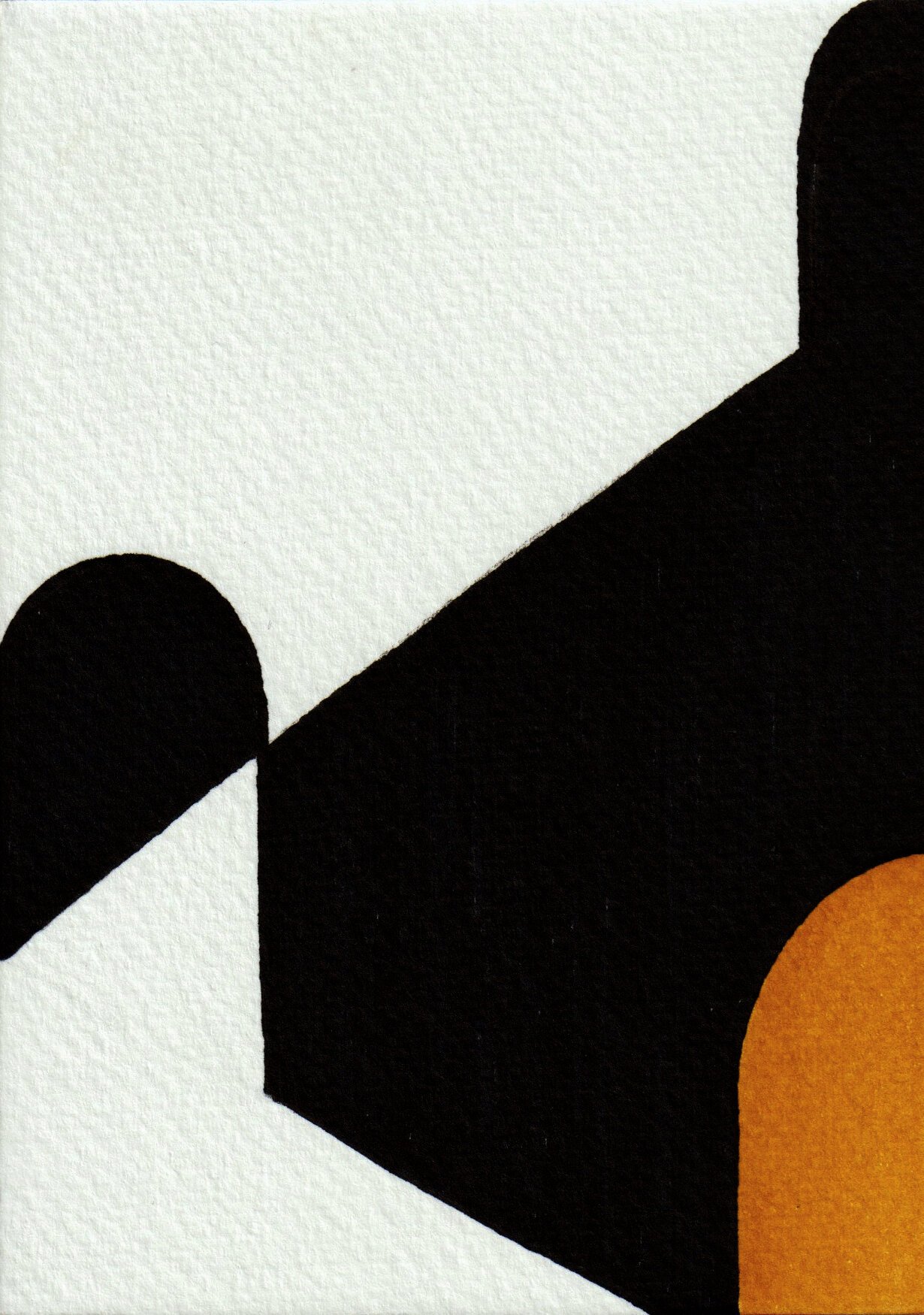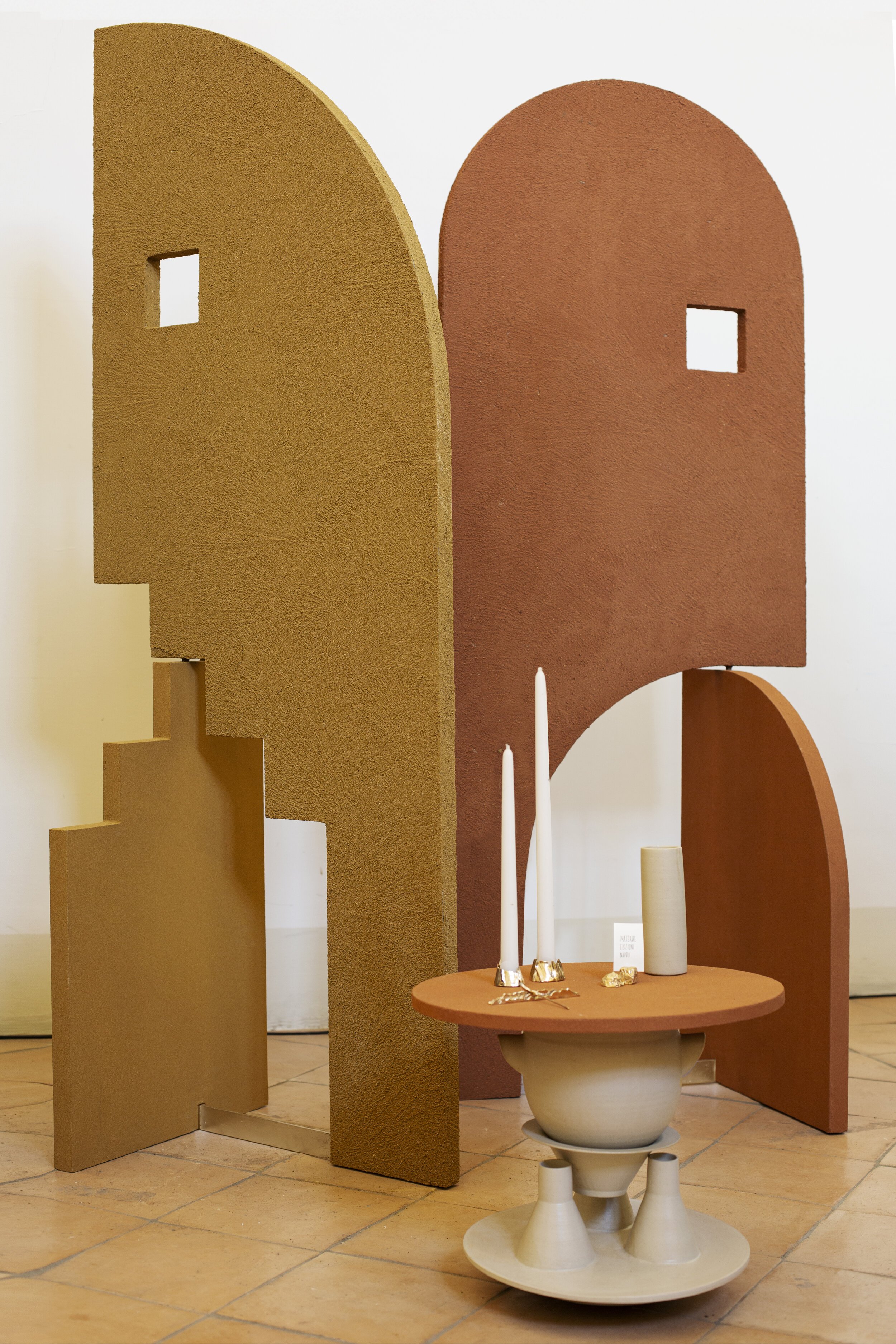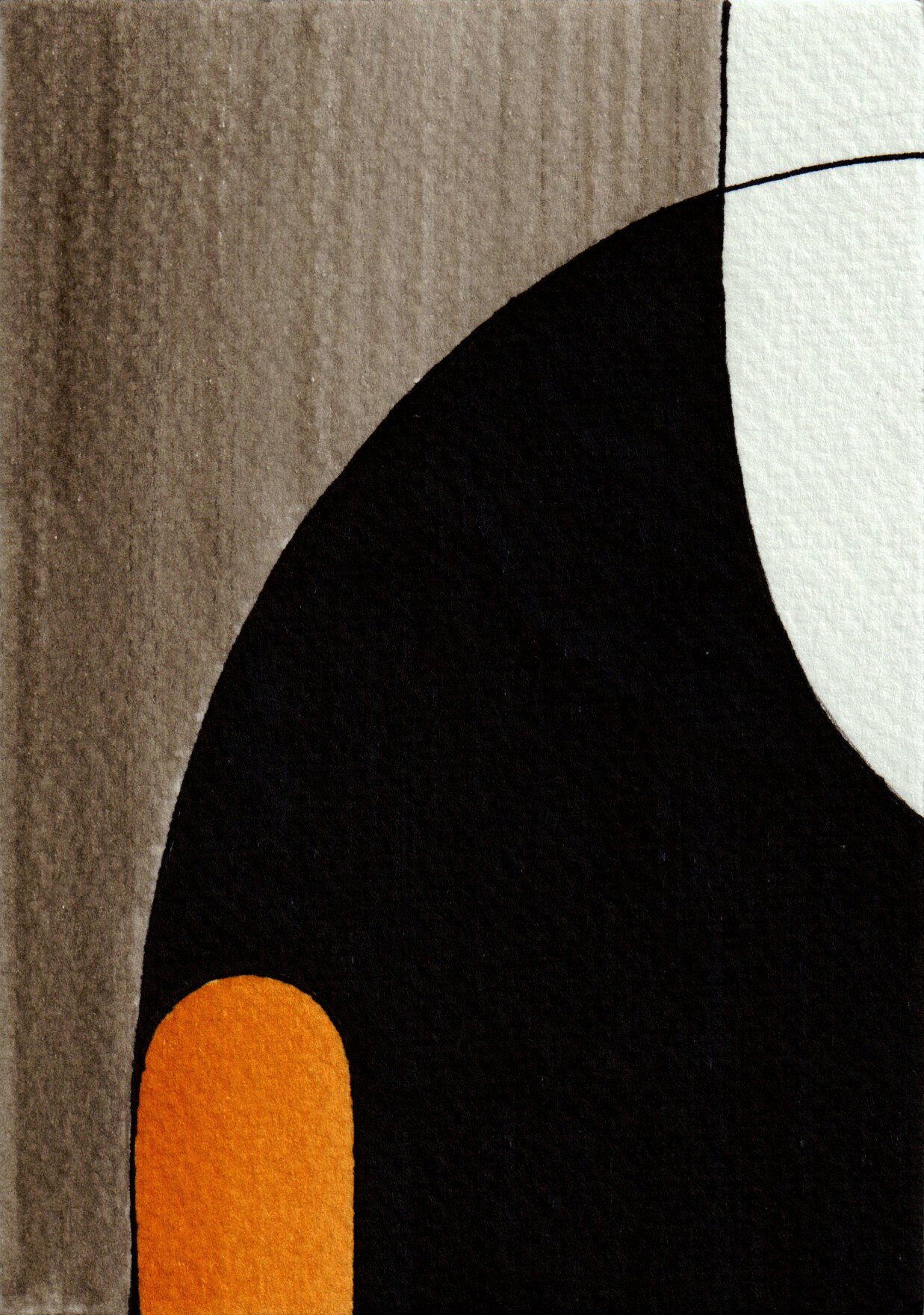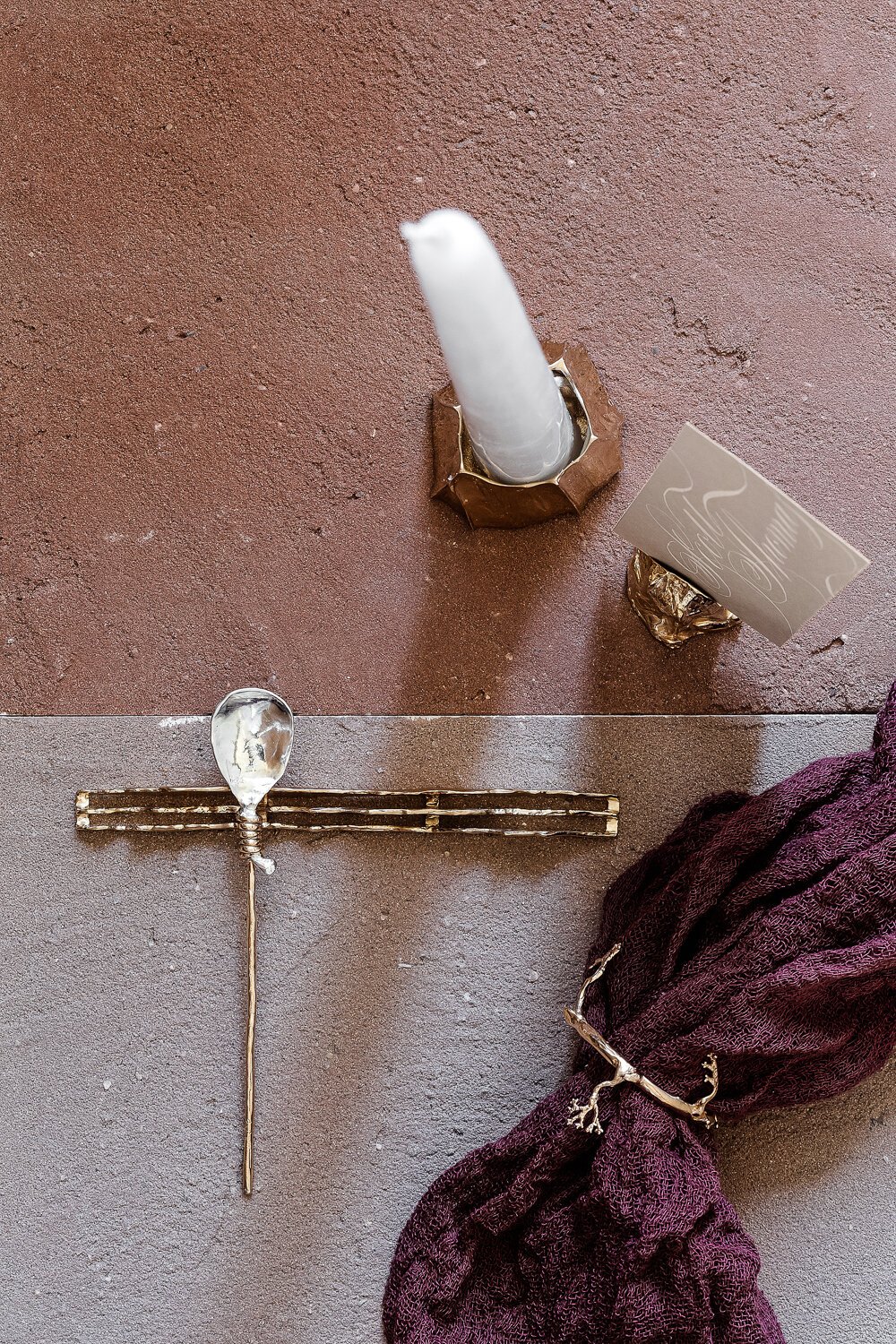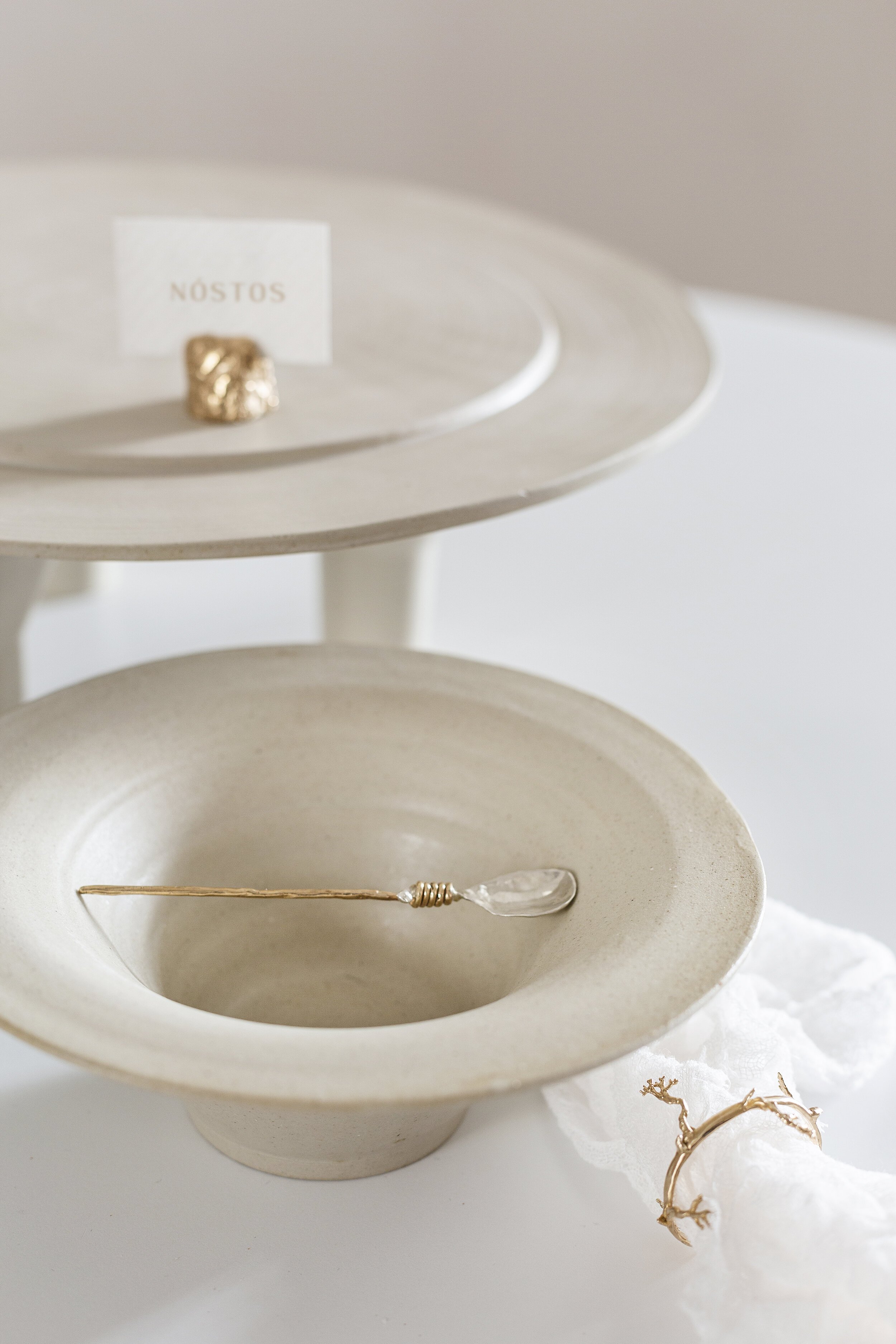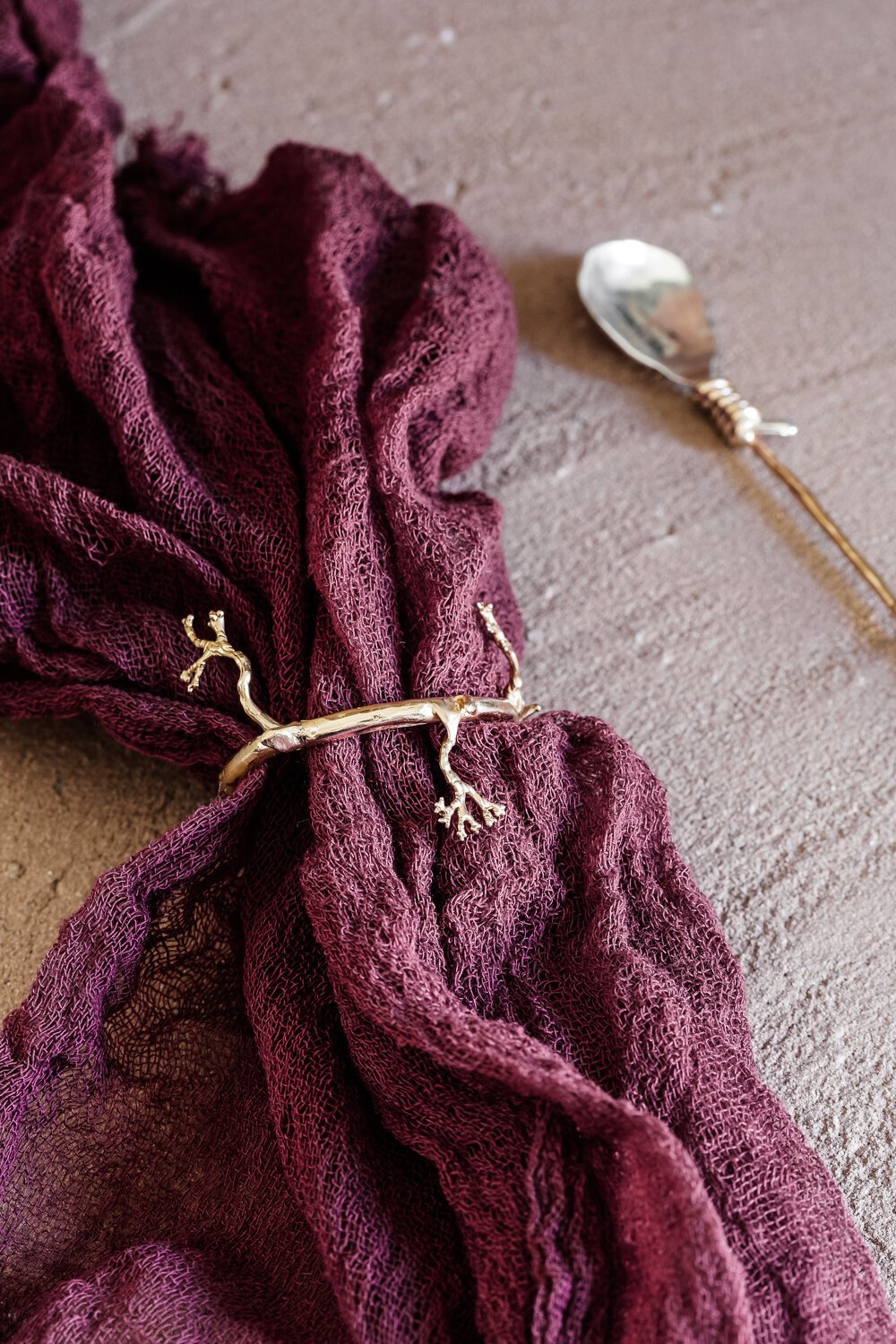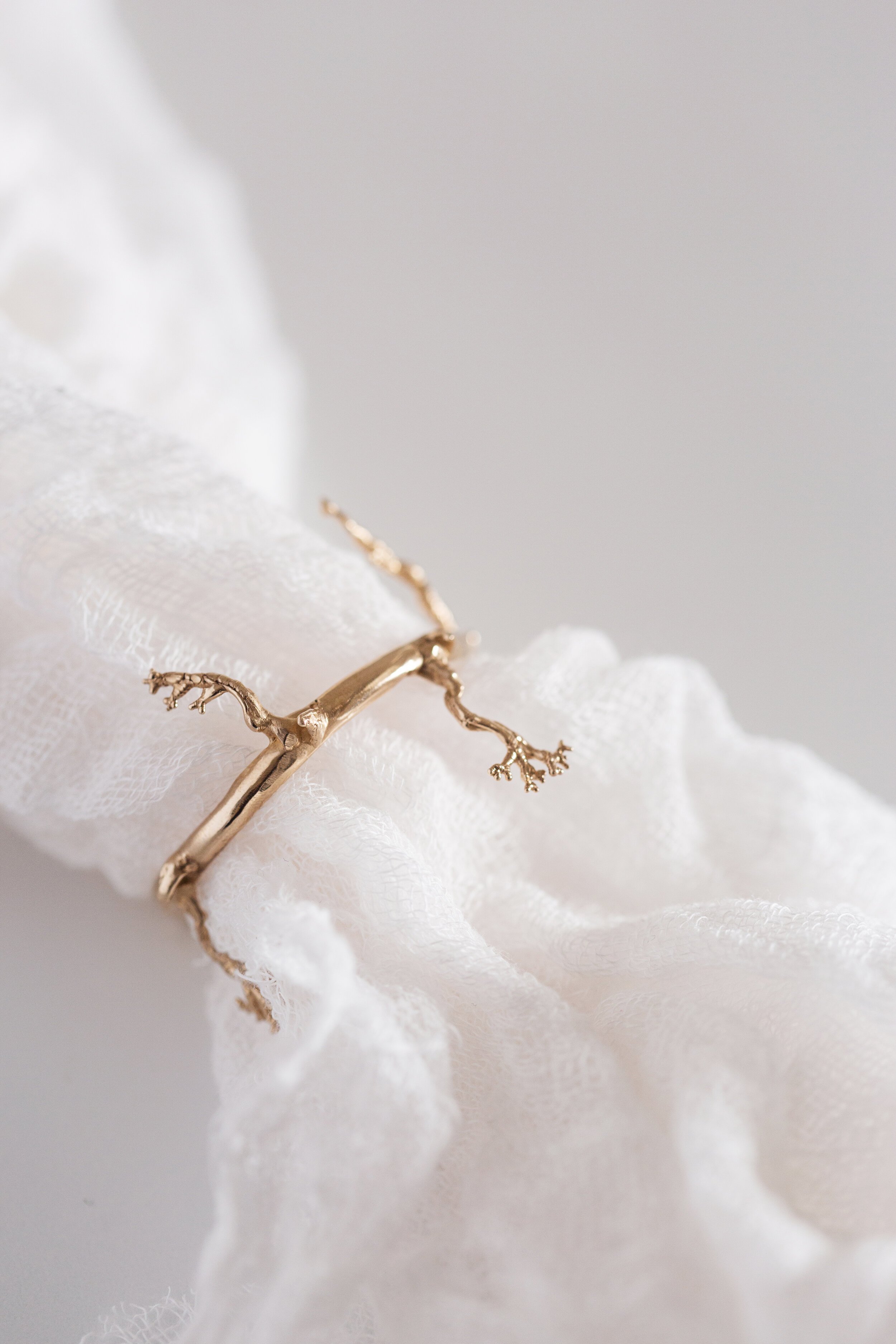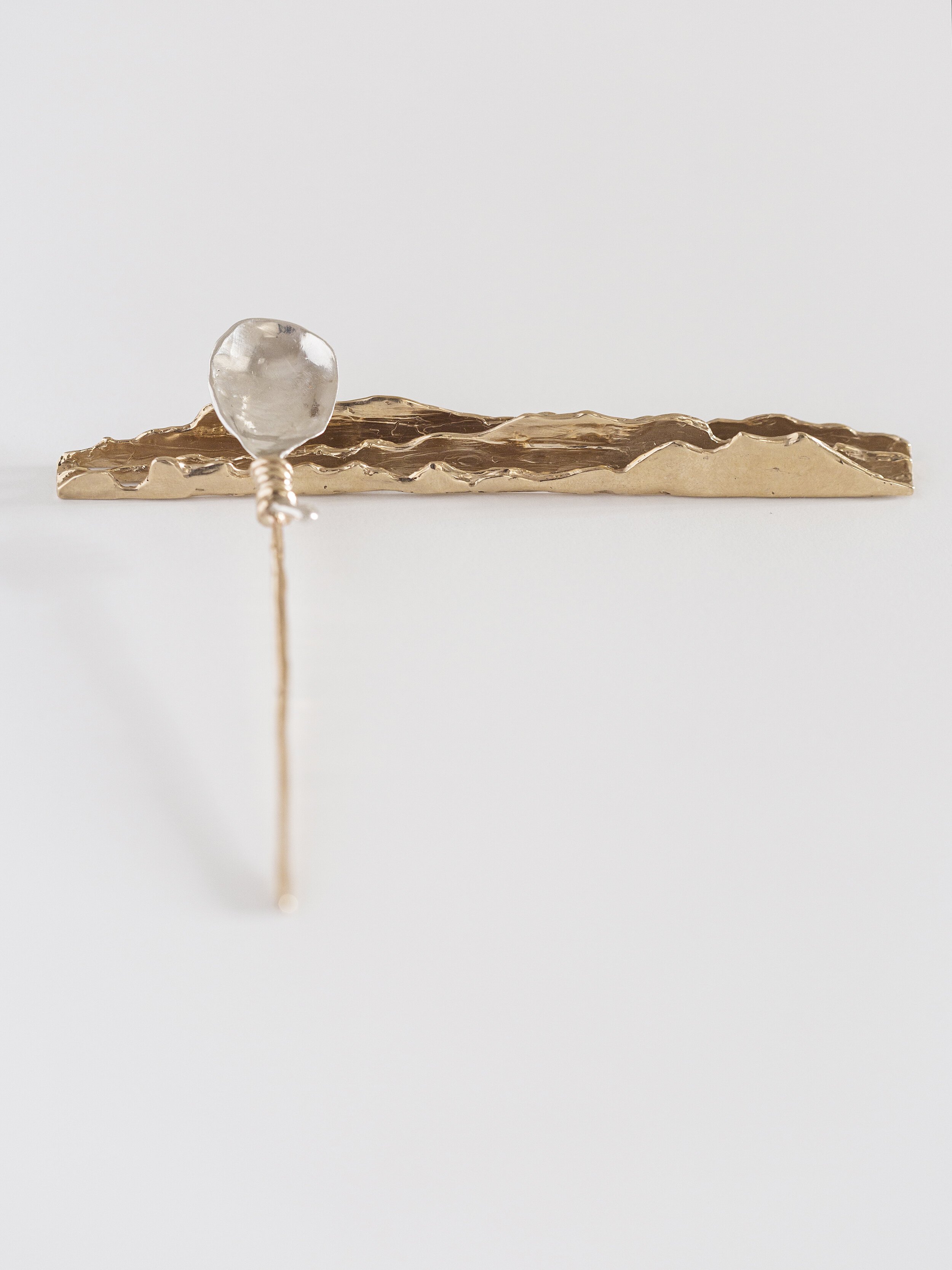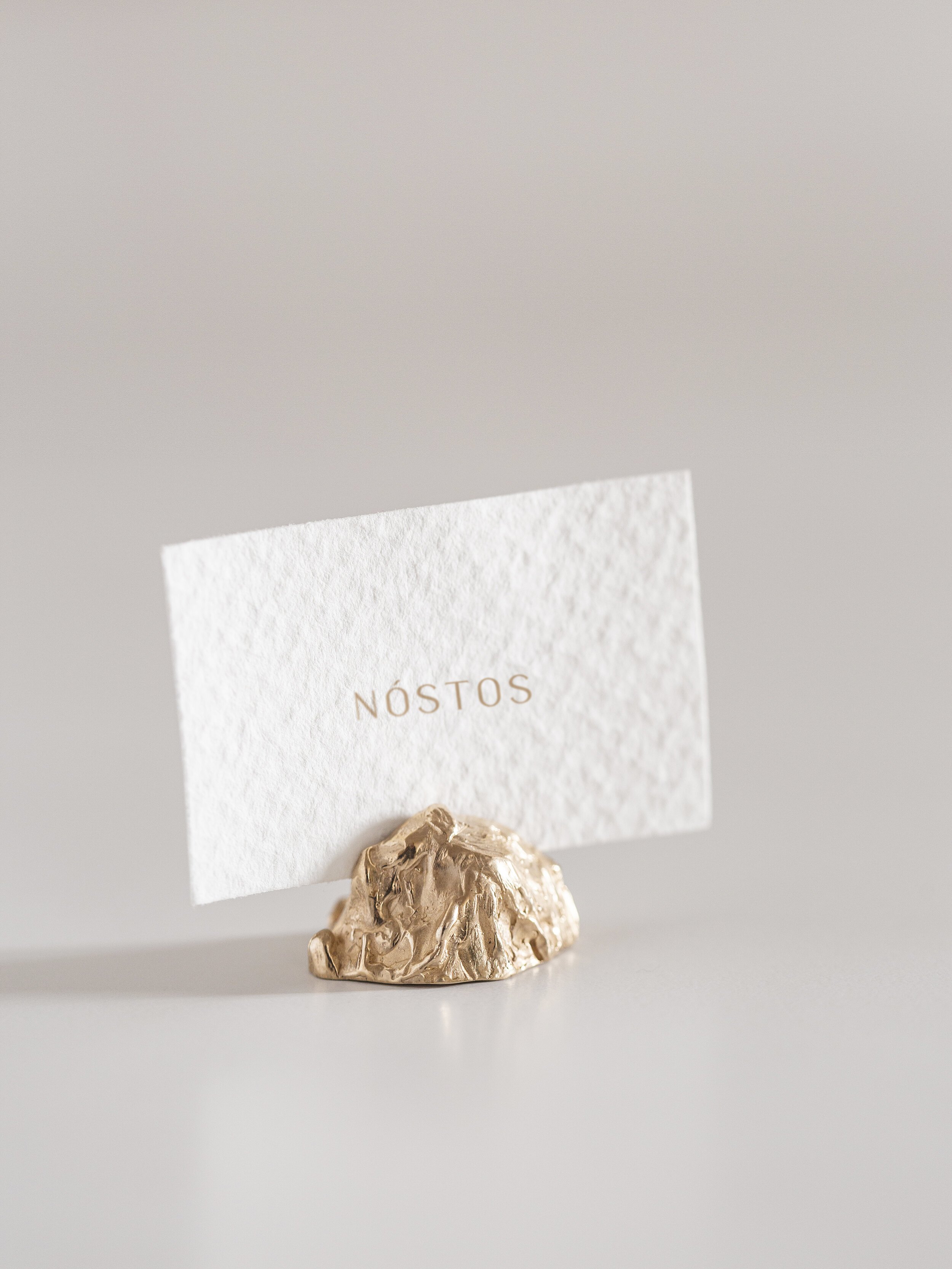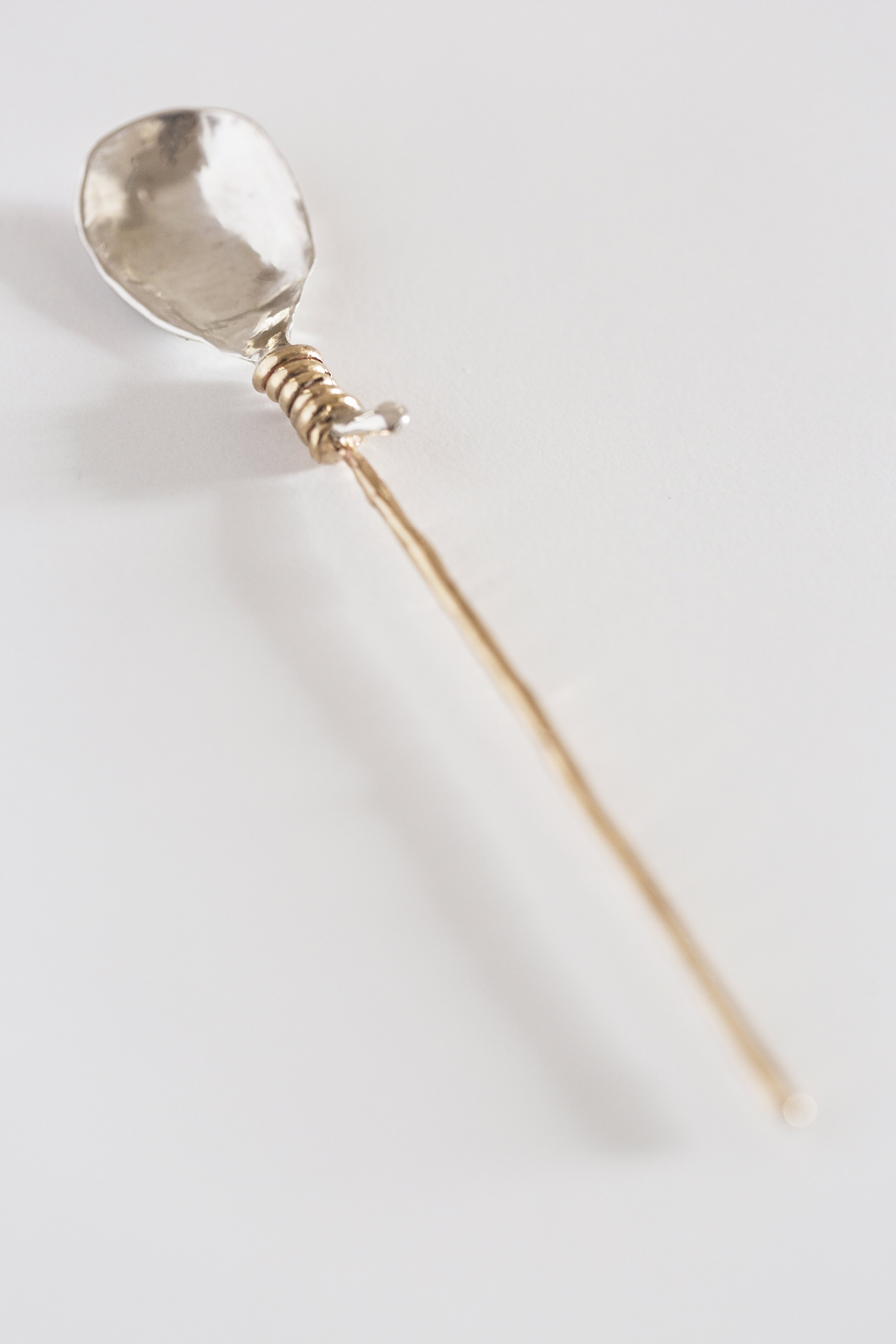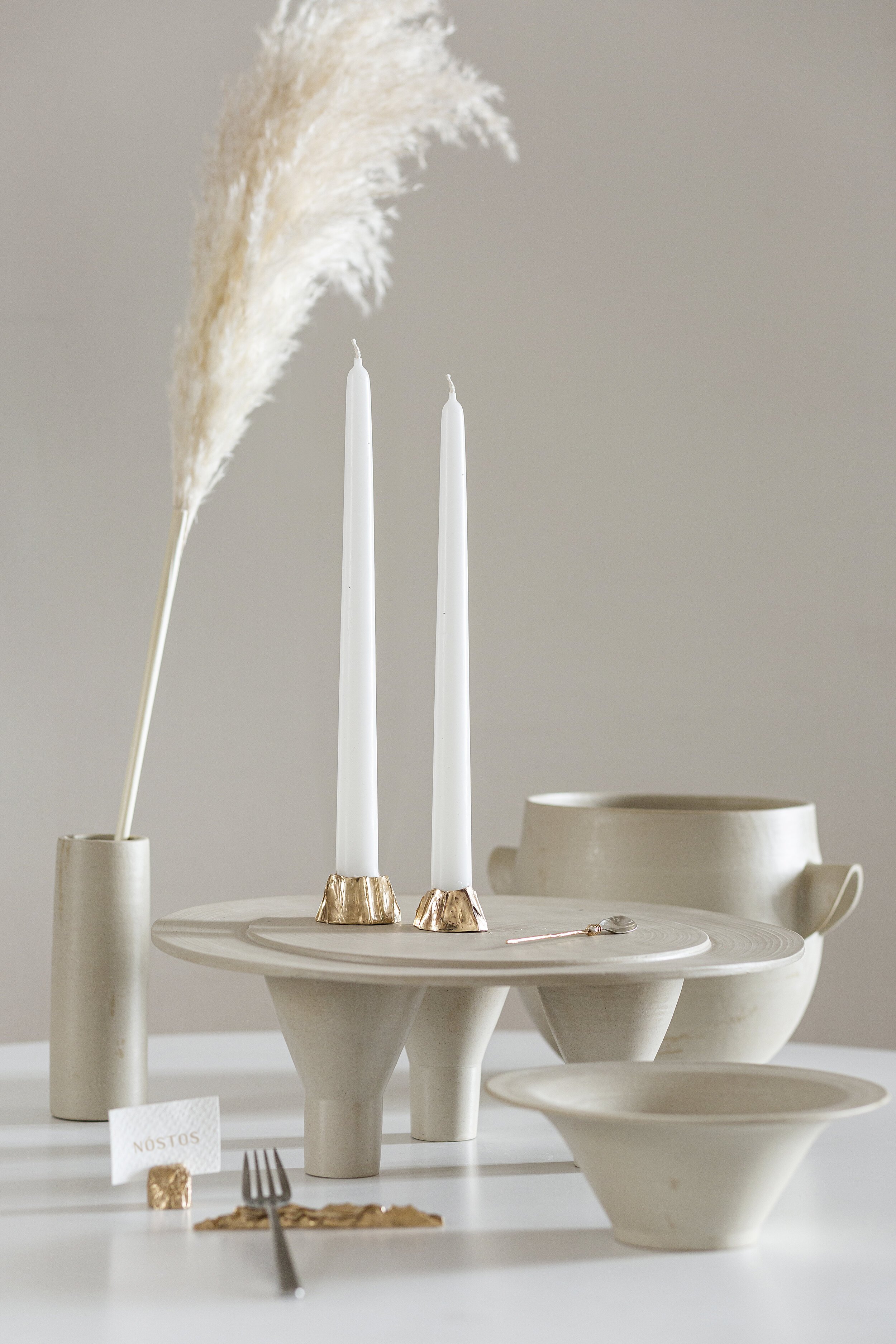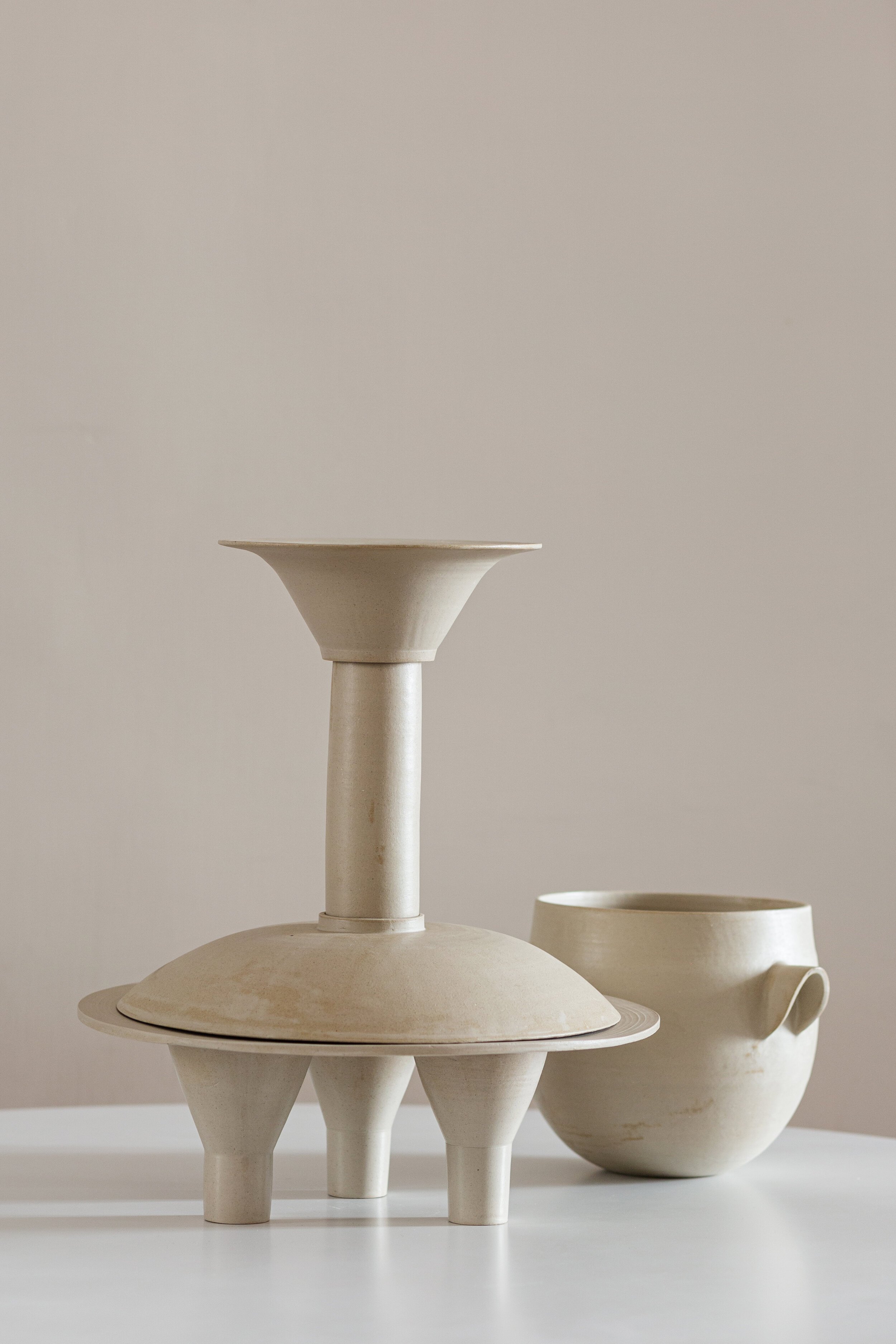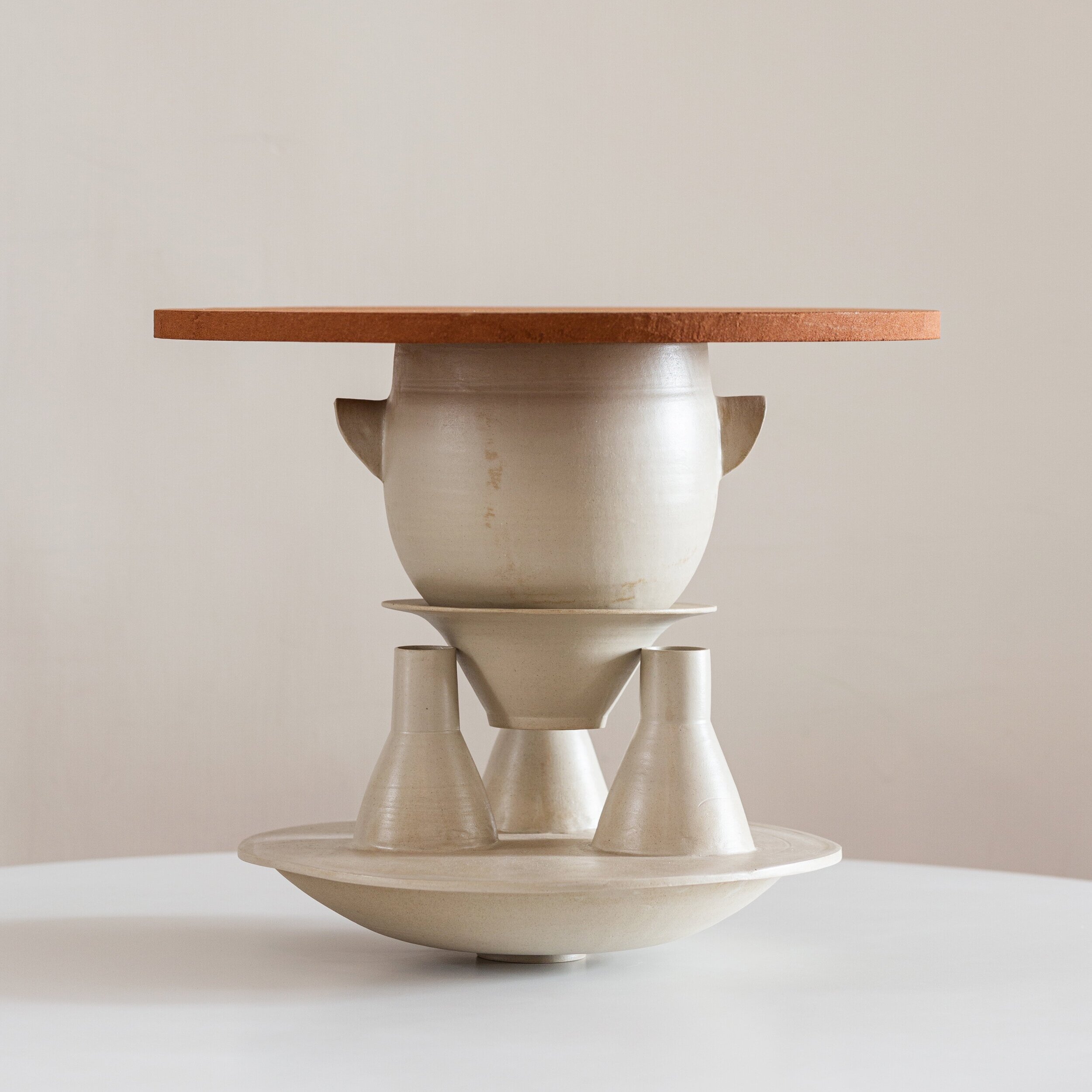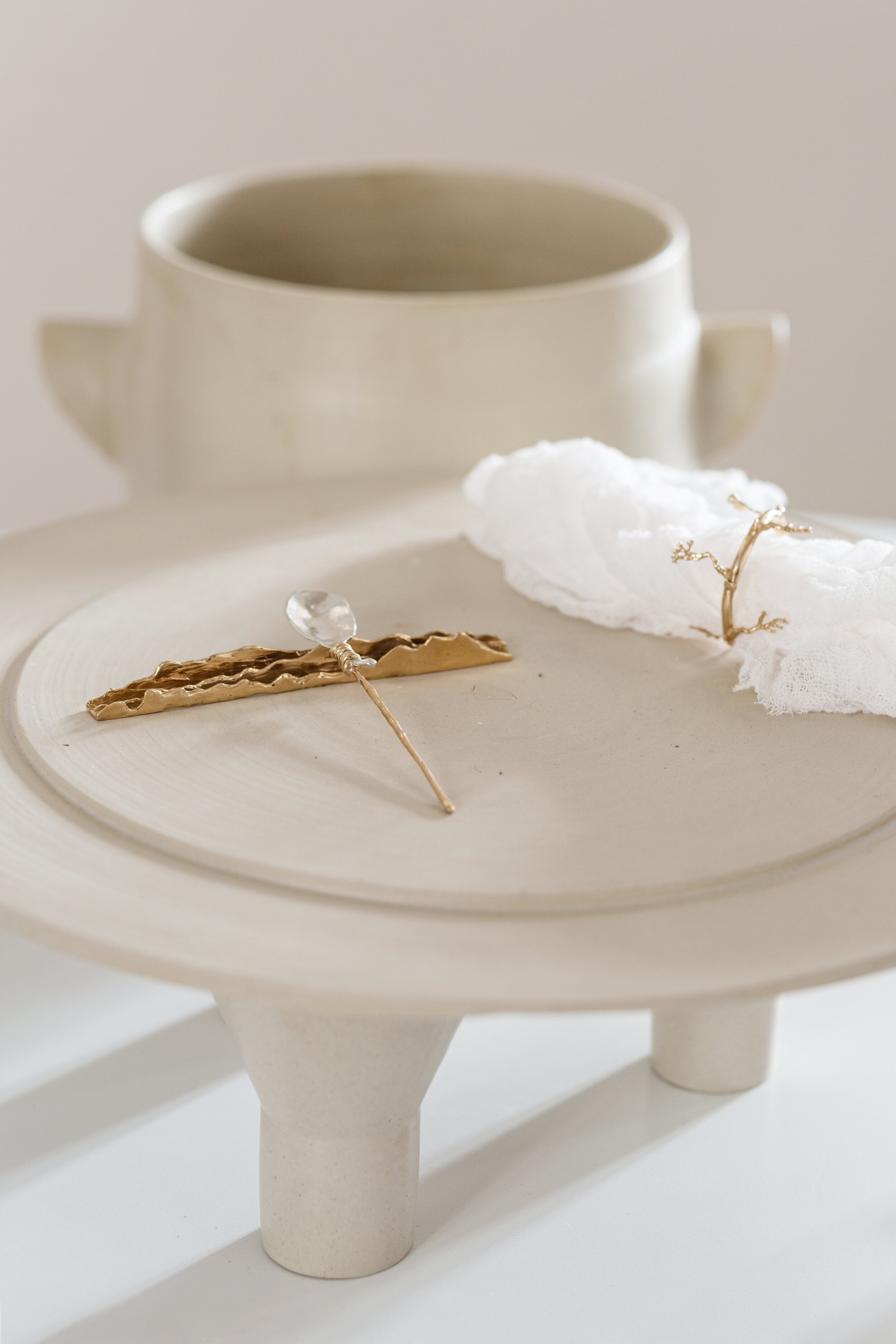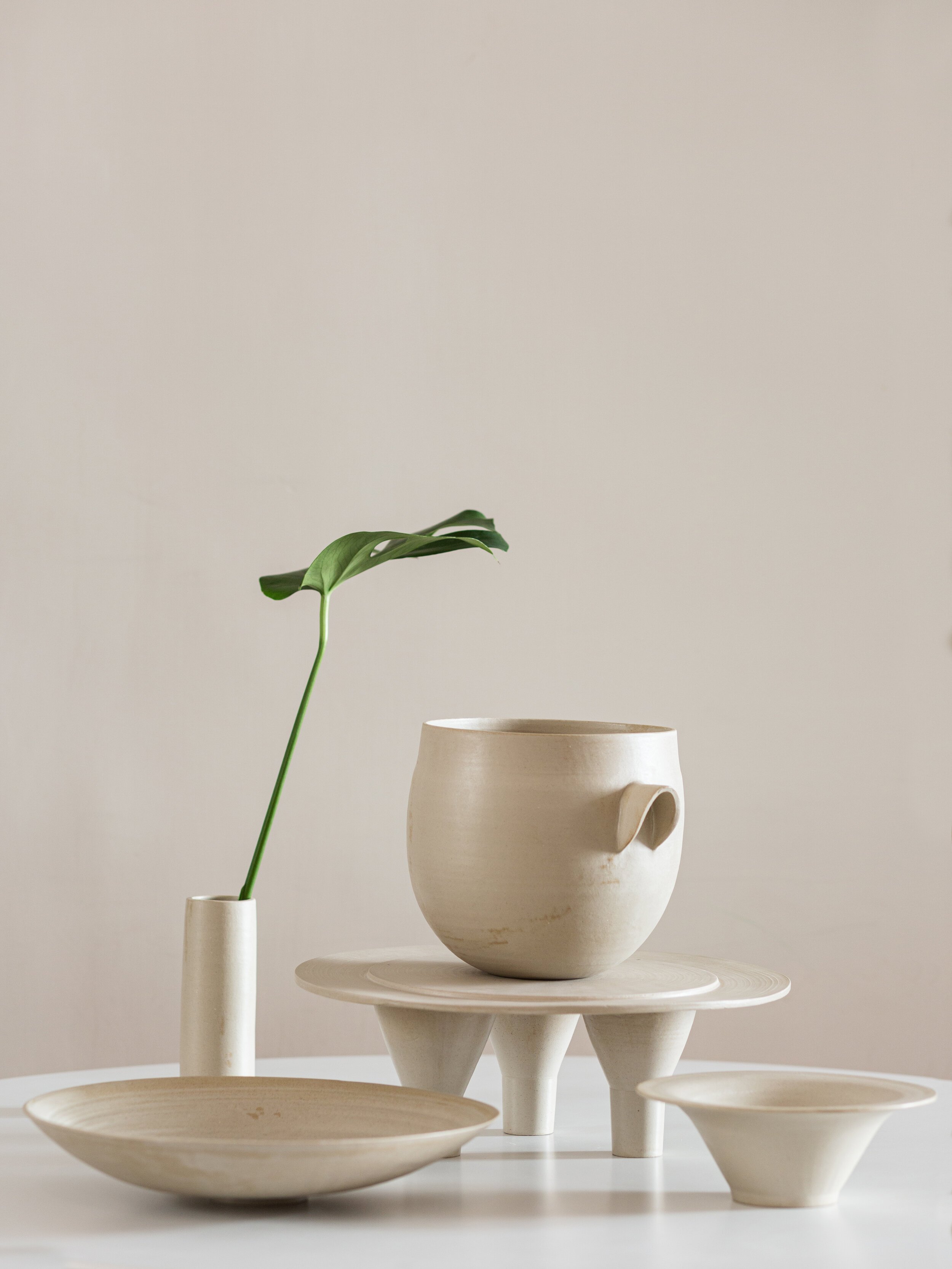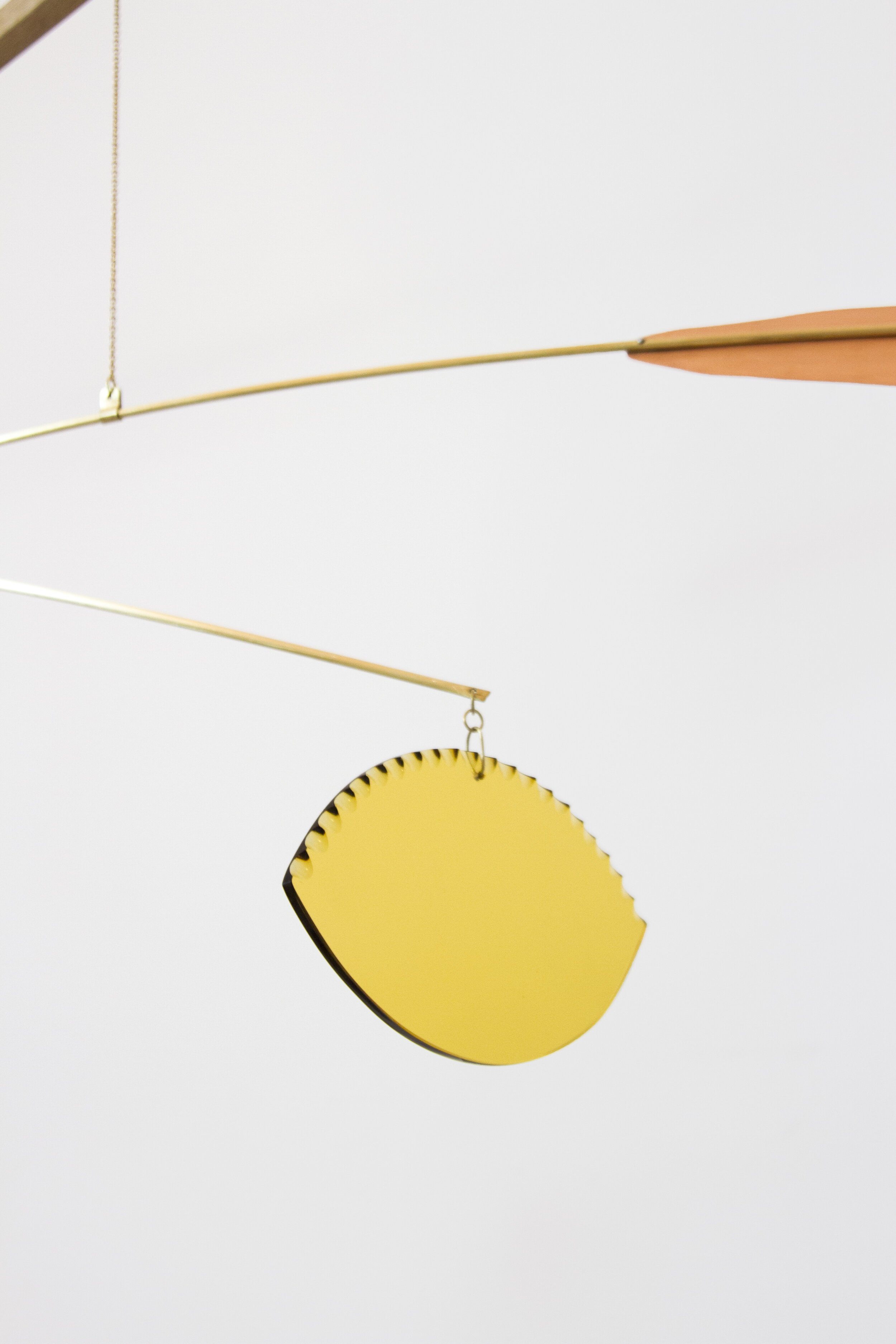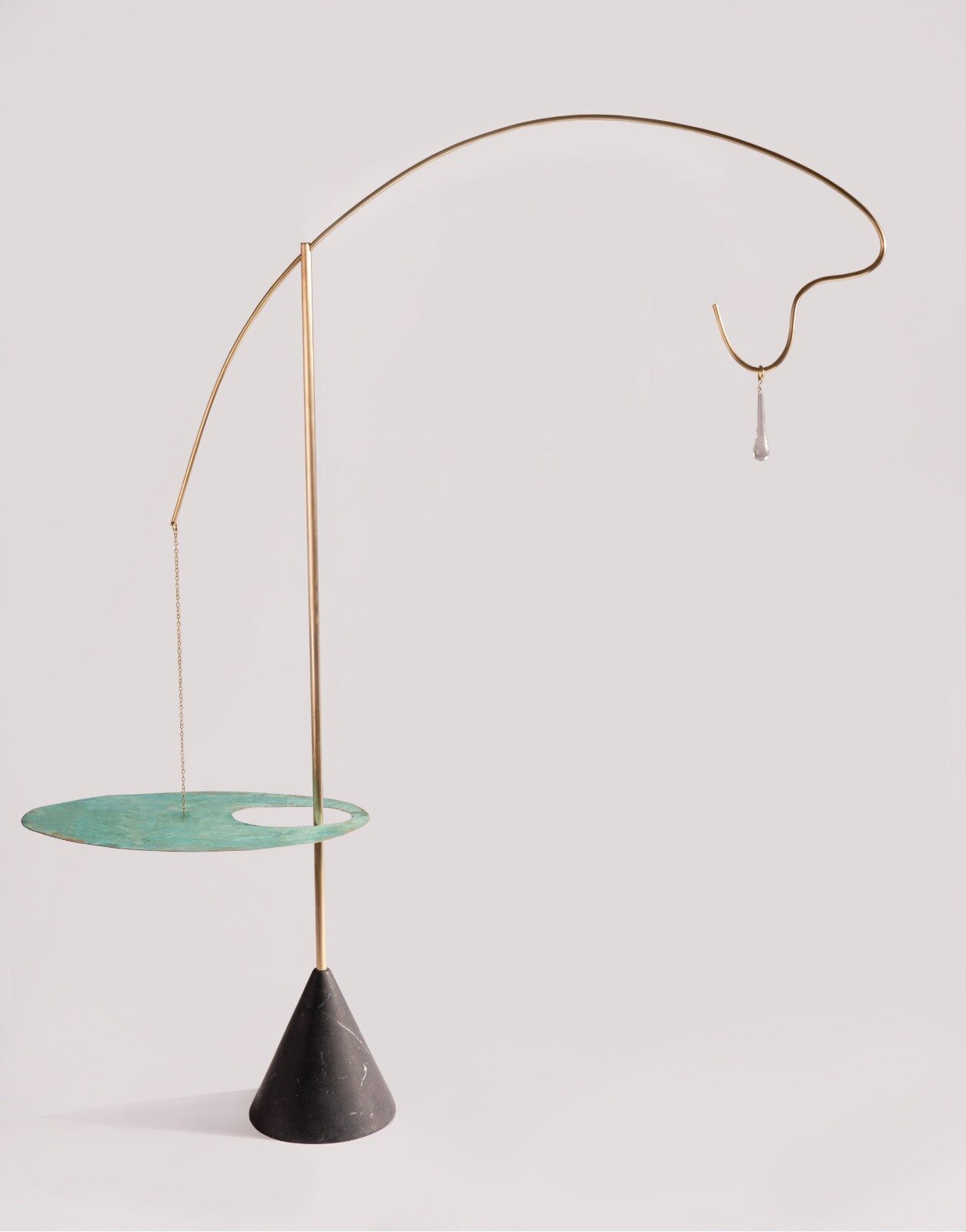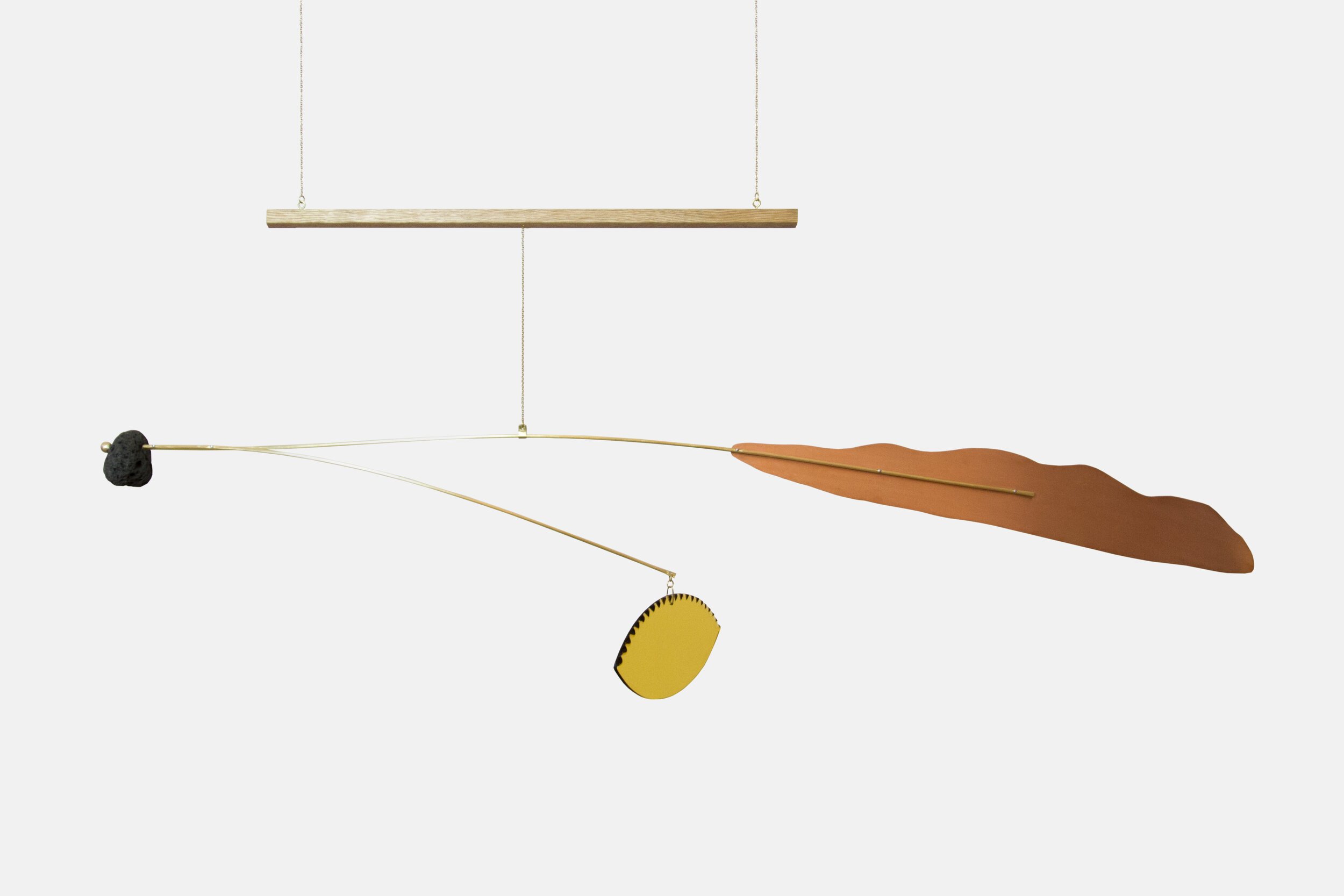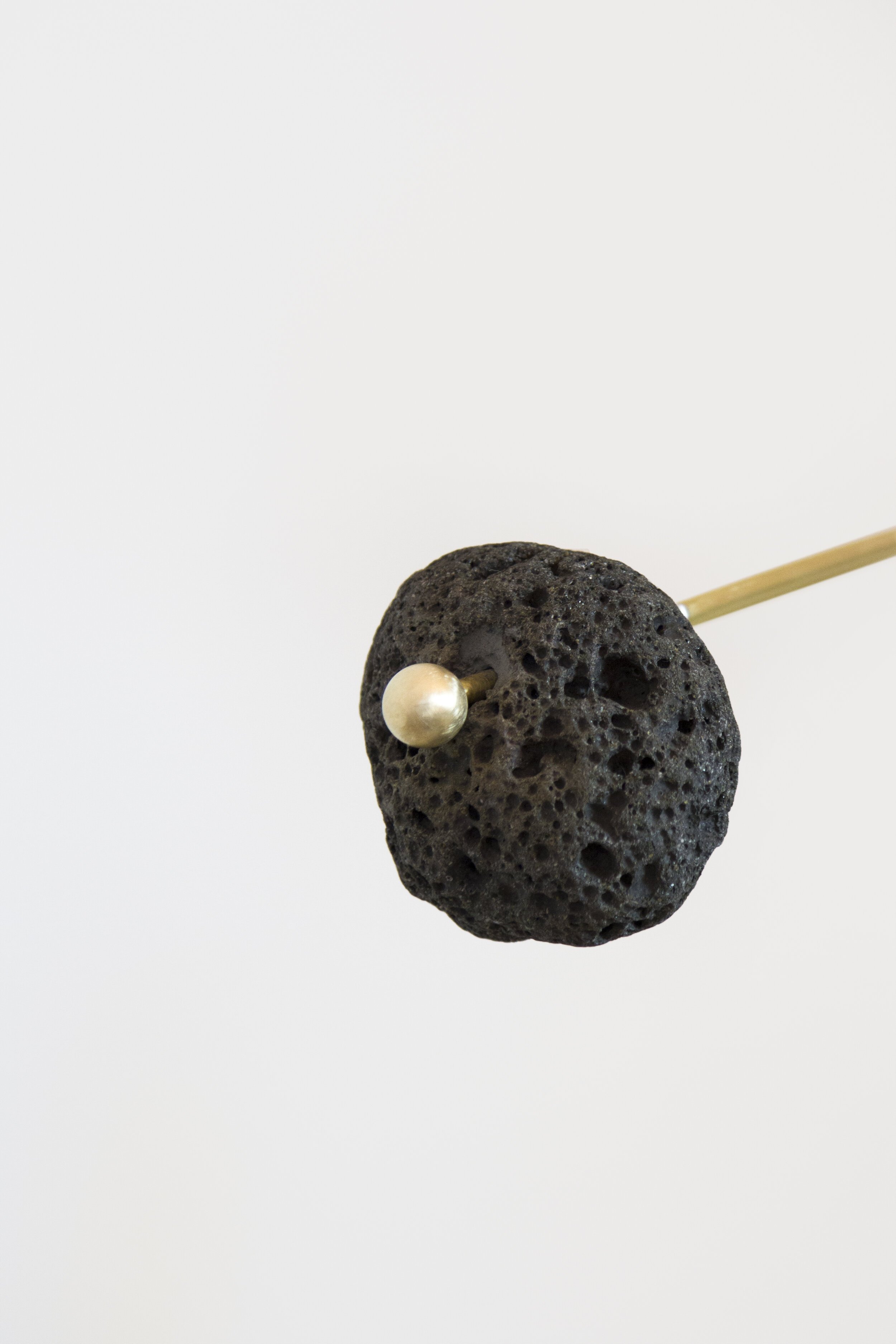MATERIÆ EDIZIONI NAPOLI
is our curated collection of lifestyle objects in collaboration with young Italian design talents. A strong emphasis is placed on the whole creative process, from the selection of raw materials to the manufacturing techniques.
PROCIDA room dividers by Giuseppe Di Costanzo
EN//
Open arches, external staircases, balconies: Procida room dividers (Giuseppe Di Costanzo x Materiae Edizioni Napoli) take inspiration from Southern Italy’s vernacular architecture facades overlooking the sea, consisting naturally arranged geometric shapes.
The screens can be combined in different arrangements, to create a minimal and grounding domestic landscape. These evocative design pieces are finished in raw earth by Matteo Brioni: the most ancient of building materials, a compound of clay and natural aggregates, simply left to air-dry.
IT//
Arco, volta, scala: i paraventi Procida (Giuseppe Di Costanzo x Materiae Edizioni Napoli) si ispirano all’architettura vernacolare dell’Italia meridionale, reinterpretando il linguaggio essenziale delle facciate procidane allineate sul mare, creando nuovi paesaggi domestici.
La suggestione è quella di un’architettura spontanea dalle radici antiche, che risponde ai bisogni e alle attitudini del popolo che la abita, saldamente legata al paesaggio in cui si insedia.
La materia è la terra cruda Matteo Brioni, materiale dalla tradizione antichissima, composto di argilla e inerti naturali, lasciata semplicemente essiccare all’aria.
«Non più le sparse casette con solo pianterreno ma, abitazioni più complesse, con bizzarre architetture ad archi o a mezzi archi, con strane scalette rampanti che conducono a terrazzi o a balconi sorrette da mensole. […]. È questa un’architettura che pare sorta spontaneamente dalla terra, come una fioritura da essa inseparabile. Umile arte, ridiventata anch’essa natura, per la sua perfetta necessità e per la sua aderenza alla vita che le si svolge intorno» (Pane, 1928)
About Giuseppe Di Costanzo is a Neapolitan architect whose research revolves around European cities and their development, layer over layer. Segni Minimi (minimal marks) is a collection of drawings on paper and was the starting point for Procida room dividers. Essential, abstract and geometric designs where lines, figures and fields of color overlay each other.
NÓSTOS bronze and silver table set by Devi Petti
EN//
Bronze and silver table set created with the lost wax casting system, each object is a unique piece:
- cutlery rest
- place card holders
- napkin holder
- candle holders
- coffee or salt spoon
"Nóstos (ancient greek: νόστος) is the journey to return back home, usually by sea, the Odissey par excellence. Nóstos is also the root of the word Nostalgia, intended as the sorrow of being far from home. To create this collection I started my journey back home from Naples. I pictured myself as a fisherman sailing along the coast, observing the wonders of the landscape and harvesting the beauty to nourish himself within. The scenography is the coastal landscape, which can be embraced with a single glance. As Ulysses I made some encounters on my way: the Vesuvius, the sea stacks with their legends and the local flora. I gathered them all and I combined them with my signature piece, a memory from home: the spoon. The end of the journey is the dinner table, where all the loved ones meet again and where the stories are shared.”
IT//
Set da tavola in bronzo e argento, realizzato con la tecnica della cera persa, ogni oggetto è un pezzo unico:
- poggia posate
- segnaposto
- porta tovagliolo
- porta candele
- cucchiaino da caffè o da sale
“Il Nóstos (greco antico: νόστος) ) designa un tema antichissimo, il viaggio mitico di Ulisse per ritornare a casa. La parola Nóstos è anche la radice della parola nostalgia, intesa come dolore e mancanza dovuti all’essere lontano. Per creare questa collezione ho immaginato un viaggio che mi portasse da Napoli a casa. Un viaggio fuori dal tempo, che mi permettesse di osservare da un punto di vista privilegiato la bellezza che mi circonda: un viaggio via mare, un Nóstos. Ho letto da qualche parte che il paesaggio non esiste di per sé, ma prende forma solo se c’è qualcuno che lo osserva, lo abita, lo racconta. Io ho voluto prendere alcuni elementi del territorio per me significativi, e renderli miei attraverso la manipolazione della materia e la combinazione con elementi personali e intimi. Il punto d’approdo è casa, la tavola da pranzo, dove le persone amate si incontrano e si raccontano, il posto dove il ricordo del Nóstos può essere condiviso.”
About Devi Petti is a designer and maker, creator of jewelry, graphics and small objects.
Born and raised in a little village of the Amalfi Coast, she is now living and working in Rome. She graduated as Industrial Designer at the ISIA of Rome and has then collaborated with several design studios. Since 2016 she has chosen to focus on her independent design practice. Her works are unique pieces entirely made by hand that talk about nature, beauty and the relation between them.
EFESTO coffee table and multi functional artifact by Martina Geroni
EN//
The Greek God Hephaestus created small movable tables. Thanks to particular contraptions, these tripods could move on three legs, bringing food and beverages to the gods. This dinamicity returnes in this collection: each object can be used individually (as jar, bowl, cake- stand, tray, etc..) or combined with others in order to shape sculptures or legs of small tables that can vary from time to time.
Efesto collection, created by Martina Geroni for Materiae Edizioni Napoli, is a combination of five vases inspired by the Greek god’s genius. The classical vase elements (foot, body, shoulder, neck and lip) have been transformed in five handmade stoneware vases. Each object can be used both individually and combined with others four in order to shape the leg of a small table.
The table top is a wooden circle finished with Matteo Brioni clay.
IT//
Efesto è ispirata al mito del dio greco che ideò tripodi che, grazie alla presenza di arguti marchingegni, potevano spostarsi come veri e propri automi. La collezione di Martina Geroni per Materiae Edizioni Napoli è costituita da 5 vasi in gres realizzati al tornio, della colorazione naturale della terra. A Edit Napoli i vasi sono presentati uniti, sotto forma di scultura architettonica, per fungere da gamba al piano in legno rivestito dalla terra cruda di Matteo Brioni. Per la progettazione di Efesto sono stati indagati gli elementi classici di cui si compone un vaso (piede, pancia, spalla, collo, orlo e ansa) e ognuno di essi è stato proposto in uno dei 5 vasi. La dinamicità dei tripodi del dio greco è richiamata dal fatto che ogni vaso può essere utilizzato singolarmente (come contenitore, ciotola, alzata, vassoio, ecc...) o combinato con gli altri per comporre sculture che variano, volta per volta, nelle forme.
About Martina Geroni_ After some working experiences in Italy and Mexico as a traditional architect, she feels the need to reinvent herself as a professional.
Nowadays she dedicates her daily life to the creation of something natural, handmade and concrete. Always devoted to the Environment, she mediates a dialogue between it and Architecture attending several workshops on the recognition and research on natural clays and raw earth (adobe) as the solution for the building sector. She emerges from and for the earth, as a creative artisan: she imagines and creates useful and multifunctional everyday objects with clean and neat shapes. Even looking for sustainable answers to everyday needs recovering natural scraps, she and her life partner got rid of disposable plastic waste since 2017
SciòSciòmobile sculpture by The Ladies' Room Collection
EN//
Elements in brass, lava stone, hand-cut coloured glass and copper, both oxidised and polished, come together referencing the city of Naples. The thin metal structure flexes as if under the weight of hanged clothes, while sea foam imprints its texture on the copper surface. An eye-shaped pendant gleams under the sun. The whole assemblage is counter balanced by a raw piece of volcanic rock. A domestic amulet in which symbolic elements coexist and balance in an abstract suspended landscape.
IT//
SciòSciò, un amuleto domestico sotto forma di scultura mobile, è stata commissionata al collettivo The Ladies’ Room da Materiæ Edizioni Napoli in occasione di Edit 2019. Pensata come omaggio alla città di Napoli, la scultura bilancia elementi in ottone, pietra lavica, vetro tagliato a mano e rame ossidato. La struttura in ottone si flette come sotto il peso di panni stesi ad asciugare, mentre l’acqua del mare sembra aver lasciato la sua impronta sul rame, ossidandolo. Edizione limitata, 10 pezzi.
SciòSciò è comparsa su numerose riviste di arredamento e design tra cui Living Corriere, Wallpaper, Sight Unseen e Domus web.
Partenopemobile sculpture by The Ladies' Room Collection
EN//
Many legends have been told about Partenope, the siren who gives her name to the city of Naples. What is certain, is that her body is earthly and her soul belongs to the waves. In this kinetic sculpture, she is represented in a joyful vital gesture, one in which its agile tail rejoins the surface, now oxidized like the seashore, now tangible as dry land. A drop of crystalline water captures the fleeting moment in a delicate balance of symbols.
Partenope was commissioned by Materiæ Edizioni Napoli to The Ladies' Room Collective. Partenope, the siren who gave her name to Naples, is represented in the scupture as a joyful and vital gesture, with her agile tail just about to dive beneath the water's surface. A single piece of blown glass represents a drop of water. Only 12 pieces available.
IT//
Partenope è stata commissionata al collettivo The Ladies’ Room da Materiæ Edizioni Napoli in occasione di Edit 2019. La sirena, che dà il nome alla città di Napoli, è rappresentata nella scultura in un agile tuffo. Una goccia in vetro soffiato a bocca evoca uno schizzo d’acqua. Edizione limitata di 12 pezzi.
About The Ladies’ Room Collective was founded by Ilaria Bianchi, Agustina Bottoni, Astrid Luglio and Sara Ricciardi, in 2016, in Milan. Their work initiates a reflection on contemporary design, by creating artifacts and experiences, that are the engine of discussion on the renewed need for sensory involvement. On the occasion of the first edition of EDIT Napoli, The Ladies’ Room (Ilaria Bianchi, Agustina Bottoni, Astrid Luglio) presented Sciòsciò and Partenope, two domesticamulets inspired by the city of Naples, exclusively for Materiæ Edizioni Napoli.









